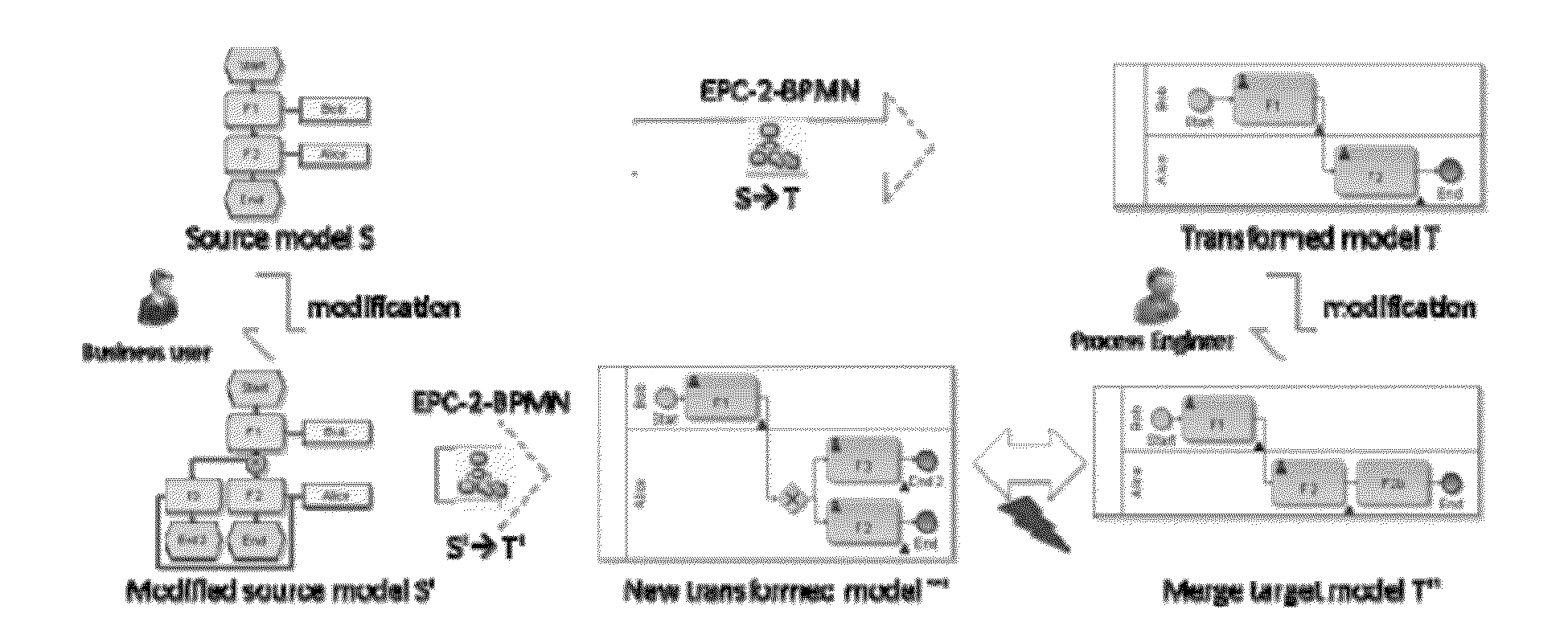Systems and/or methods for identifying and resolving complex model merge conflicts based on atomic merge conflicts
a complex model and merging conflict technology, applied in the field of interactive model merging systems and/or methods, can solve the problems of cumbersome working directly with these representations, affecting the accuracy of model merging, and most textual representations being ill-suited for direct use by humans
- Summary
- Abstract
- Description
- Claims
- Application Information
AI Technical Summary
Benefits of technology
Problems solved by technology
Method used
Image
Examples
Embodiment Construction
[0073]Certain example embodiments relate to improved interactive model merging techniques. More particularly, certain example embodiments relate to improved interactive model merging techniques, e.g., based on the ARIS model transformation. Advantageously, certain example embodiments make the model merge more convenient (e.g., such that fewer user interactions are involved in arriving at the desired merge result) and / or more secure (e.g., so as to reduce the likelihood of the unintentional creation of invalid models during merging). It will be appreciated that although certain example embodiments are described in the context of and using examples from the ARTS model transformation merge, the techniques described herein may be implemented in connection with any form of interactive model merge. For instance, the example techniques described herein may be applied to an interactive merge tool using the split screen view (e.g., similar to as in Oracle's BPA Suite). Thus, certain example ...
PUM
 Login to View More
Login to View More Abstract
Description
Claims
Application Information
 Login to View More
Login to View More - R&D
- Intellectual Property
- Life Sciences
- Materials
- Tech Scout
- Unparalleled Data Quality
- Higher Quality Content
- 60% Fewer Hallucinations
Browse by: Latest US Patents, China's latest patents, Technical Efficacy Thesaurus, Application Domain, Technology Topic, Popular Technical Reports.
© 2025 PatSnap. All rights reserved.Legal|Privacy policy|Modern Slavery Act Transparency Statement|Sitemap|About US| Contact US: help@patsnap.com



